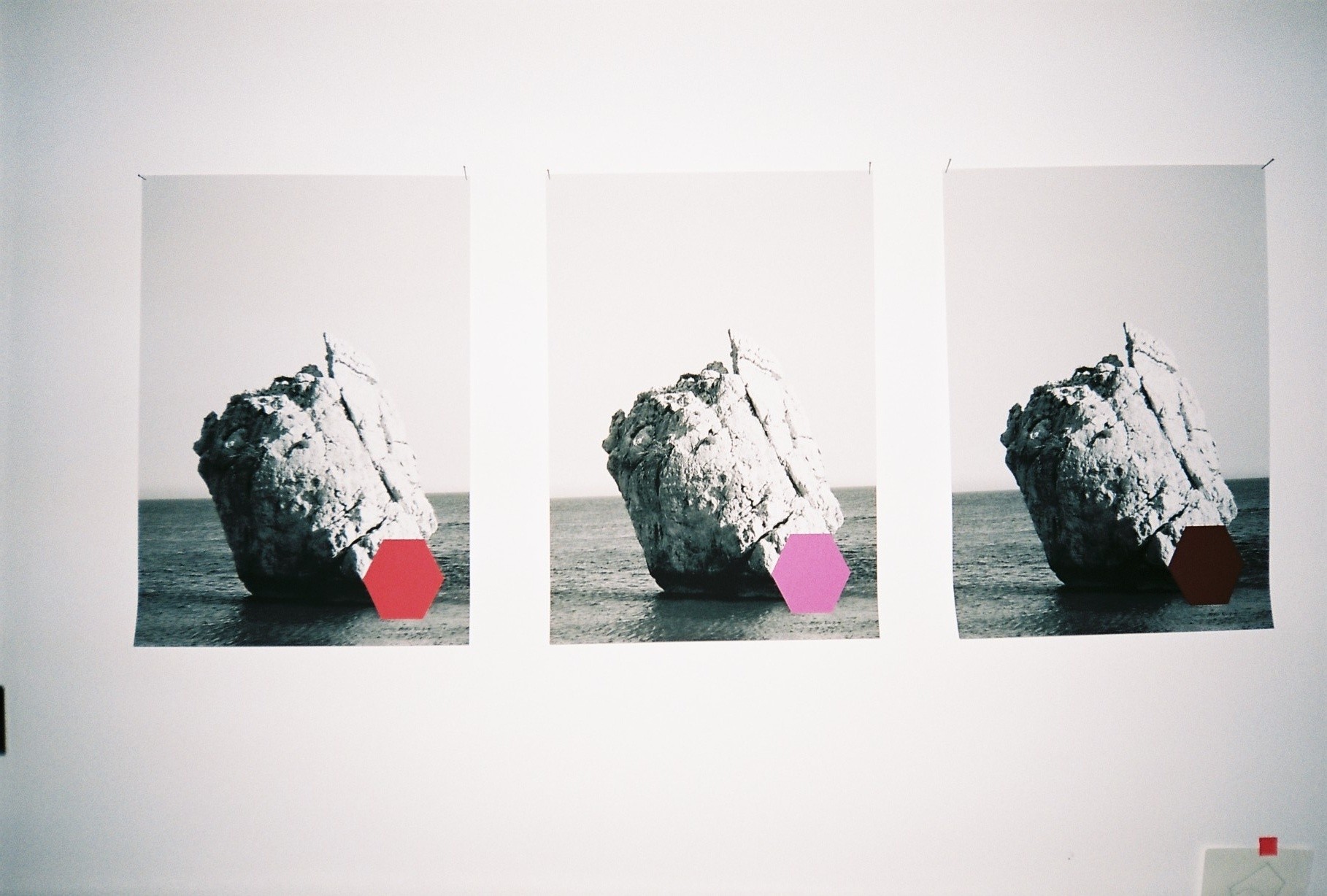









Geological Relandings

The edges of rocks and stones – jagged and smooth, chiselled and weathered – undulate across the retina, both deeply familiar and somehow surprising. Lines of colour, of polished steel, of sharp Perspex, cut across the sight lines, the landscape of the studio. Geological depositories are framed and spliced by Amy Stephens’ interventions, which are replete with both erasure and elevation.


A sparkling boulder sits half-hidden among packing materials on the floor. Once spat out by an American volcano, Stephens found it lying unwanted in its native landscape and “relanded” it in London. It was recently shown in her solo exhibition Land | Reland [Portland] at Upfor Gallery in the US and later at a separate solo exhibition Land | Reland [London] at William Bennington Gallery in London, disconcertingly raised above viewers’ heads on a grey metal monumental structure.


Stephens’ practice is full of these unexpected encounters with rock and stone in its various formats: as landscape feature, as artist’s material, as depository of geological time. As viewers, we are confronted with the strangeness and variety of the stuff that makes up the ground under our feet, formed from the sediment of dead life-forms, or from the earth’s molten layer that supports the thin, uneven crust upon which we exist.

Stephens’ work utilises a mixture of lightweight and heavy materials, structurally referring to opposing but inherently connected notions of balance, suspension, and anchoring. Working in the face of environmental breakdown, her sculptures suggest the delicate balance of the ecosystem, our ‘progression’ towards a tipping point, and our impulse to reframe these challenges in anthropocentric terms.


We are confronted with our shared desire to control, modulate, and emotionally disenfranchise the natural world, despite our abstract knowledge of our dependence on it. Simultaneously, her practice also highlights the many tensions and contradictions inherent in that impulse. Manmade materials frame and dissect natural elements, but the stainless steel, plastic and bands of neon also appear to seek to escape the conditions of their own framing: Perspex sheets both halt and permit the journey of the viewer’s eye; the suspended outline of a silver square turns in the vagaries of the breeze; a yellow band underscoring a photograph continues on the wall beyond the confines of the frame.


By ‘relanding’ the geological specificity of one landscape in the context of another, Stephens prompts the viewer to reconsider their relationship with the land upon which they tread everyday – so often occluded from sight, and therefore from mind by tarmac and concrete – and their psychological relationship with the unknown place from which the stone is taken. Differences of time and space are collapsed, but simultaneously magnified. The viewer is placed both at the centre and a little apart; whatever the consequences of human actions, geological time will continue, indifferent, and yet for us the world is reaching a breaking point from which there may be no return.
Amy Stephens is participating in the upcoming group show Rewind/Rewild at OmVed Gardens, 1-7 May 2019, curated by Anna Souter and Beatrice Searle. For more information, visit here.
15.03.19
Words by Anna Souter
Related
Studio Visit

Amy Stephens
Journal

